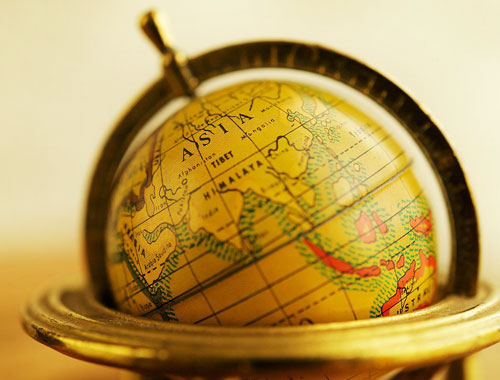

Gwalior, the city with golden past and majestic historical backdrop. Gwalior is located in the central Indian state of Madhya Pradesh on the main New Delhi-Mumbai and New Delhi-Chennai rail route. Gwalior is an main city of Madhya Pradesh in India. Gwalior is an old city, known for its old and massive forts. The legend says, Gwalior derives its name from a great sage Gwalipa who cured a chief of the Kachwaha clan suffering from leprosy. The city's history revolves around the its massive Gwalior Fort. According to an ancient inscription, Gwalior was founded Hun invaders in 6th century BC. However the local historical account says, the fort was founded by Kuchwaha prince Suraj Sen. According to legend, it had been cured by a hermit Gwalipa after whom the city is named. The Kuchwahas's successors, the Parihars were brutally killed by Iltutmish army and seized the fort for eleven months. Eventually, the fort fell to the hand of Muslim army, the honored Rajput women trapped inside committed mass suicide by self- immolation. The golden era of Gwalior came under the rule of Tomar king who retook Gwalior in 1398. Under Man Singh, who ascended the throne in 1486, the hilltop gained the magnificent palaces and fortifications that were to earn the epithet " the pearl in the necklaces of the castles of the Hind". With decline of Mughals, the city Gwalior became the base of the most powerful of the four Maratha clans, the Scindias who legacy still continues in the state.
The main attraction of the place is the Gwalior Fort. It has a strong heritage and was the seat of power of many important dynasties t is also the abode of Indian Classical music. One of the nine jewels Of Akbar’s court Tanesn resided in this place. Today, Gwalior is one of the most developed cities of India with factories producing cotton, yarn, paint, ceramics, chemicals, and leather products. The city is also famous for many esteemed educational institutions.
October to March
Gwalior Fort, Man Mandir, Teli-ka-Mandir, The Sas-Bahu temples, The Chhatris, Tomb of Mohammad Ghaus, Jai Vilas Palace, Surya Mandir (the replica of the Puri Sun Temple).
Gwalior Fort: Built in the 15th century by Raja Mansingh Tomar on a hilltop, the mighty Gwalior The outer wall of the fort stands two miles in length and 35 m in height.
Man Mandir: The palace built by Man Singh Tomar is a delicate structure exhibiting a sense of joy and abandon through use of colour, motif, and design.
Gujari Mahal: Gujari Mahal historical symbol of love. The courage and beauty of Mrignayani and her love with Raja Mansingh are now a part of popular folk tradition. now converted in a museum and houses very magnificent collection of art.
Teli-ka-Mandir:Contrasting with the predominant north Indian style of architecture is the Teli-ka-Mandir. This temple is believed to the oldest in the Fort, built in the ninth century. Some believed it was so named because it was built in the Telangana style; others say this was because it was built by telis (oil merchants).
Man Singh Palace: The majestic and wonderful palace is decorated with frieze of ducks also mossaic tiling of elephants, tigers and crocodiles in blue, yellow and green embellished the Chit Mandir (painted palace). This beautiful palace was built by illustrious Tomar ruler Man Singh in the 15th century.
Jai Vilas Palace & Scindia Museum: An epitome of Scindia legacy. The gold paint around the durbar hall weighs half a tonne. Eight elephants were suspended from its ceiling to check it could cope with two 12.5m high,250 light bulb, 3.5 tonne chandlers said to be the largest pair in the world.
Sas-Bahu Temples: The Sas-Bahu temples, in another part of the Fort, are not, as people believe, dedicated to a mother-in-law (Sas) and daughter-in-law (Bahu). Sas-Bahu is the name traditionally given to two adjoining temples of different sizes.
The chhatris: The chhatris, memorials to former Scindia rulers, are executed in the typical Bundelkhandi style with conical spires and heavily carved exteriors.
By Air: Well linked all with major towns.
By Rail: Gwalior is connected to all major cities in India.
By Road: Agra: 118 kms, Bhopal: 420 kms, Delhi: 318 kms, Khajuraho: 280 kms, Sanchi: 344 kms, Shivpuri: 112 kms, Indore: 486 kms, Bombay: 1086 kms.
We provide you exclusively designed and prepared tour packages for the almost all tourist’s cities of India with best possible combination with different cities, towns and states of India. You are also free to make your own itinerary, just let us know your preference of destination, nos of days for travel, travel period; preference of hotel category and no. of persons and mail to us, our professional team will work out most ideal tour packages for a scintillating and memorable tour plan for you with detailed services. To select your tour, please check the option of various tours, please visit at: http://www.india-tourism.net/itineraries.htm and to justify our credibility please check experience of our guests who toured to India with our services: http://www.india-tourism.net/testimonials.htm


Design your tour with our expertise Plan My Trip